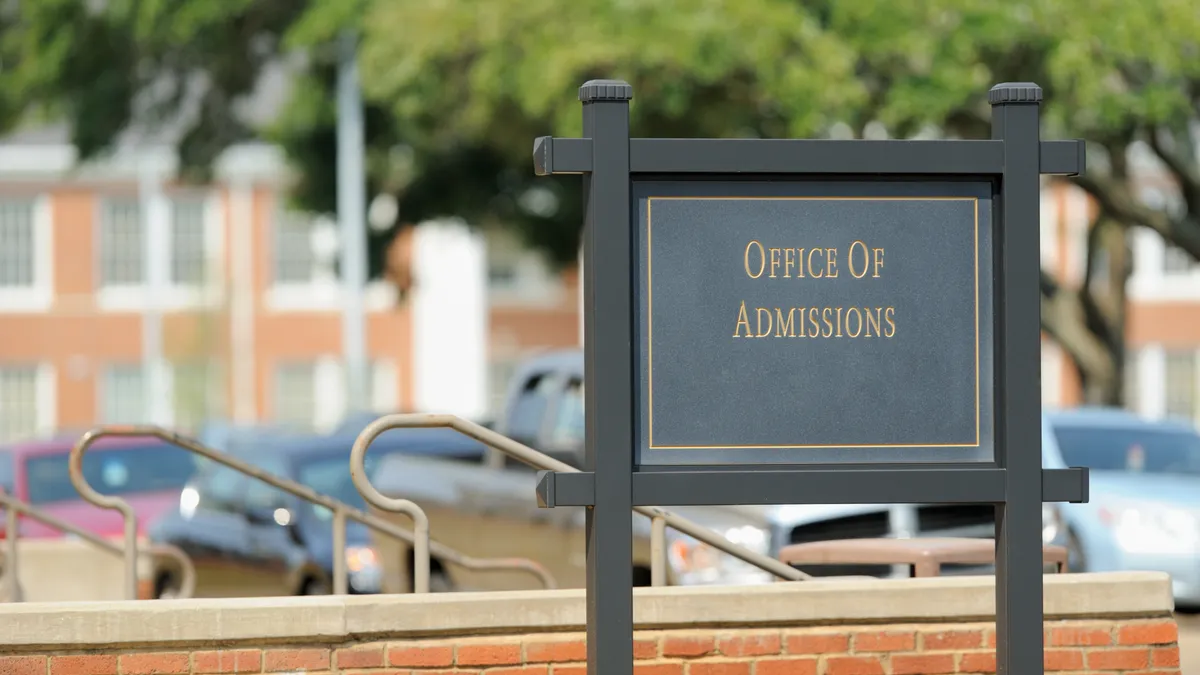Editor's note: This is the second installment in a two-part series. You can find the first part here.
The National Governors Association (NGA) recently invited governors to go abroad to Switzerland and Germany to observe first-hand the nature and effects of the apprenticeship programs there.
Michelle Sager, director for the NGA's Center for Best Practices Economic Opportunity Division, says that the increasing popularity of the apprenticeship model has come with greater awareness that a college degree may not be the only path to success. She says that in listening to the desires of private business leaders around the country, this model is one way that they feel students in high school can acquire the skills and experience actually needed.
"Governors are really interested in apprenticeships for a number of reasons and one of those is that they have heard from their private sector businesses in their states that the talent gap does exist. So, they are eager to hire people to fill positions for jobs that are open, but they also need to make sure that the people that are ready to take those positions have the qualifications to be able to hit the ground running," said Sager.
"Apprenticeships are one way that private sector companies have identified to allow students to earn while they learn to become acculturated to the company."
To understand how to implement more programs like this with the best practices, three government officials traveled abroad along with their workforce and education advisors and used the opportunity to talk with private sector businesses. They also visited the sites where students were receiving instruction. Sager said that all participants noticed how "the integration of the K12 space ... the postsecondary education system, and what the private sector needs is very much in sync."
Patrick Weber, education policy advisor, and Kelsey Smith, workforce policy advisor, went abroad alongside South Dakota governor Dennis Daugaard. They said that one of the main factors they noticed from the abroad programs is that employers not only got to develop a pool of skilled laborers, but students overall seemed to be more aware of what they wanted to do with their lives — making their decision of whether or not to go to college much more informed and responsible.
At the age of 16, students in these countries get to decide whether they want to go onto a baccalaureate-type college prep high school taking low-level college courses or gain direct workforce experience.
"The truth is they aren't picking at 16, they are picking at 19 or 20 after having actually worked in an apprenticeship model. So they actually make their decisions with significantly better information and experience than our young people do," said Weber.
"There just aren't a lot of kids at 18 that have had those experiences and know what it means to join the workforce, and so that's the biggest takeaway from their system — their structure better aligned young people with workforce experiences so that they can make informed decisions about what career path to pursue."
And in terms of filling the socioeconomics gaps our nation struggles with, Smith says that their education models open doors to opportunities for low-income, minority students.
"We saw abroad that they are facing the same challenges that we are. It's certainly an area where students of diversity are not represented as they should be. One area that can make a difference is some of our lower-income students; these apprenticeship are paid so this is a way for students to earn money, the earn while you learn model. This actually makes a dollars-and-cents difference to them."
And, Weber says that educators shouldn't fear loss of engagement at the K12 level, because it actually keeps students more engaged and prepares students for success later in life.
"I think disengagement of high school seniors would tell us we aren't doing a very good job of getting those kids educated in giving them those opportunities now. Engagement studies show that most kids are checked out in their senior year ... why don't we do something else to try to teach them those skills," said Weber.
"A workforce environment ... that has a curriculum with outlined job duties that a company, that also has some accountability to make sure kids are not just digging a ditch in backyard, can actually do more to build up those soft skills that employers are clamoring for."
Key findings from abroad
Secretary of Labor for Kentucky, Derrick K. Ramsey, was one of the people who was able to travel. He said that after going to Europe, it was easy to see what "we weren't doing" — which is focusing on students at the high school level, not just post-high school.
"Many years ago, there were two on ramps to success — higher ed or college preparation and the other one was vocational. Well what's happened over the last bunches of years is that the vocational schools have been squeezed out, stigmatized out, and then a lot of cases closed out. We now are working aggressively with higher education and community colleges and high schools about getting young people more engaged with the workforce," said Ramsey.
"Here in the state of Kentucky, 60% of our people go on to college, but only 20% graduate. While over there, 80% of their folks become apprentices, and 20% go on to university. So there's a different focus and a different culture. And so we're working aggressively to that end now to change the culture, because here in the state everyone looks at success as a person who has a nice diploma, regalia, and just graduated from a nice college or university."
Ramsey, who worked in the higher education space before becoming a secretary, says that fears of apprenticeships disrupting the college model is a part of "a constant promotion of education."
"I was in higher ed, and I too would have said that had I not taken this job. But the reality is that if you weren't extremely smart or your parents weren't extremely wealthy, you'd have a lot of debt. What I am is anti-debt and pro-opportunity. All around this country there's a shortage of skilled workers. What my team is talking about is an option."
And actually, higher education leaders working together with K12 educators to make sure the right students are going to college and are not only able to afford to stay, but prepared to excel is going to help them in the long-run.
"You've got to keep in mind that college presidents wont outwardly say they are anti-skilled labor, because it takes away from their student body," said Ramsey.
"They will probably think its a good idea for some, but they still want to have these people if nothing more, and this is me saying this, but what I've seen is a continuation of people that aren't ready for college go to college and aren't successful and causing the attrition rate to go up."
And at the same time, promotion of apprenticeships does not mean tearing down the four year college model. South Dakota Yankton School District Superintendent Dr. Wayne Kindle is one educator that has been working with Governor Daugaard to enhance workforce opportunities in his school. He says that students have been benefiting from the 'earn-while-learning model' and gaining hands-on experience, but it also hasn't stopped them from considering going to college. It's really just a matter of giving them options, he explained.
"It has been a really good positive experience for the kids, not only in the classroom for kids finishing their senior year. We also have a number of kids that wanted to get out there and experience the workforce, they want to see what they might want to do or decide to go get a 1 or two year degree at a technical school, and we feel that that's pretty valuable today," said Kindle.
"There are a number of our students that will want to continue to go on to a four year college. We still see it as being important, as there are a lot of jobs out there that will require a four year degree. But, we also realize there are number of kids that have not wanted to do that and have really wanted to get into the workforce," he said.
And to strike a balance between the two options — letting kids work while still having the chance to go to college — Yankton schools have partnered with higher education leaders to make sure that apprenticeship programs lead to real credits.
"Right now what we do — we offer AP credit through a local college and our students to graduate with those community college credits. We also have agreements with our technical schools where our students can also earn technical school credits, so if they want to go off to a tech school they are able to do that as well."













